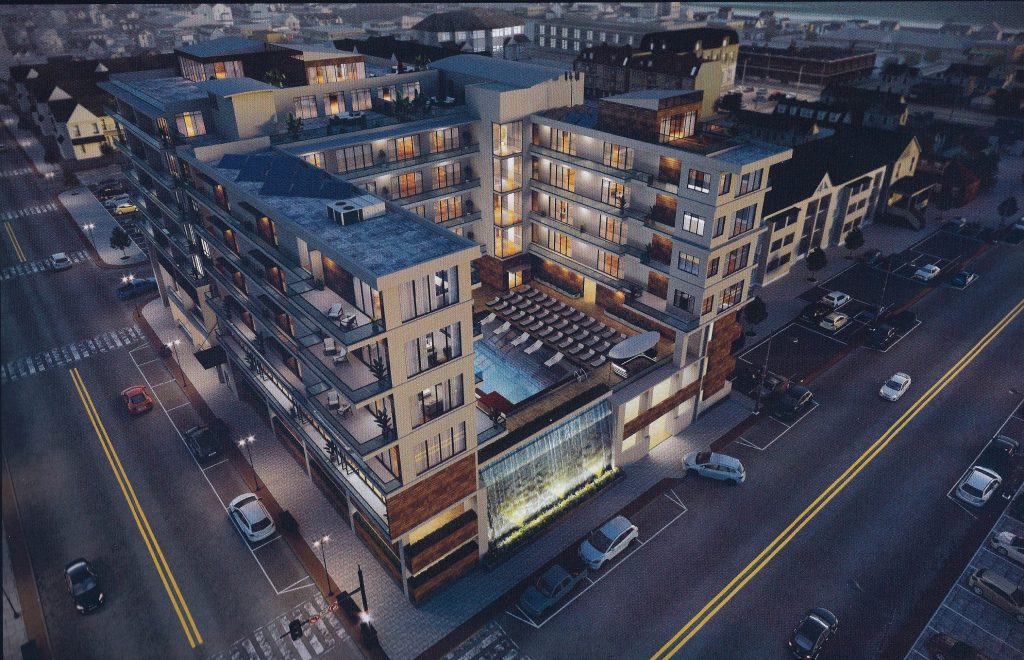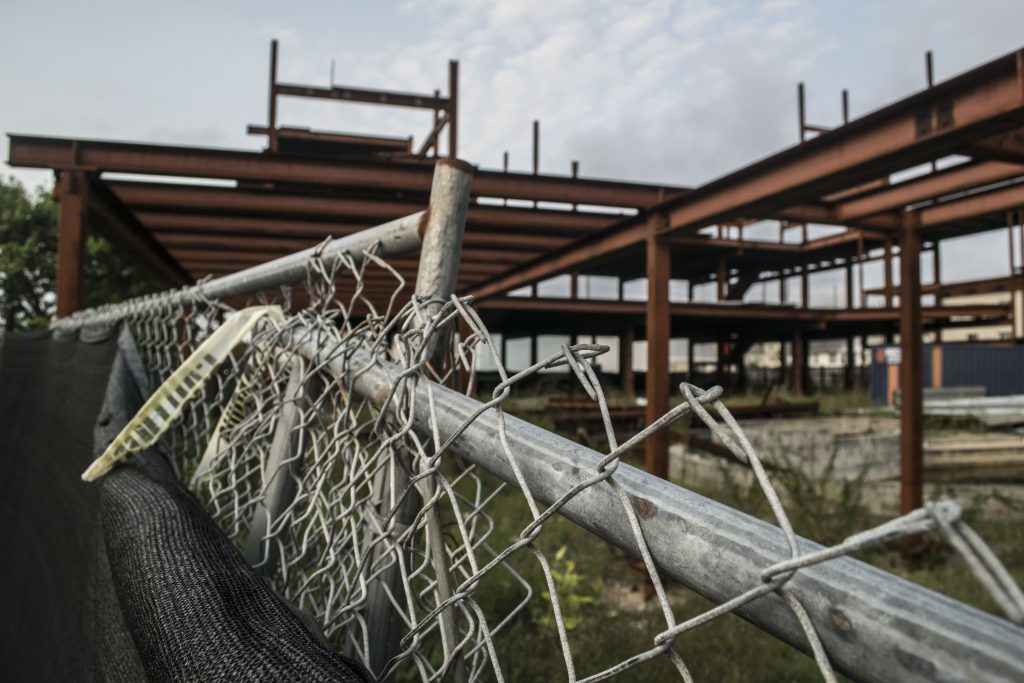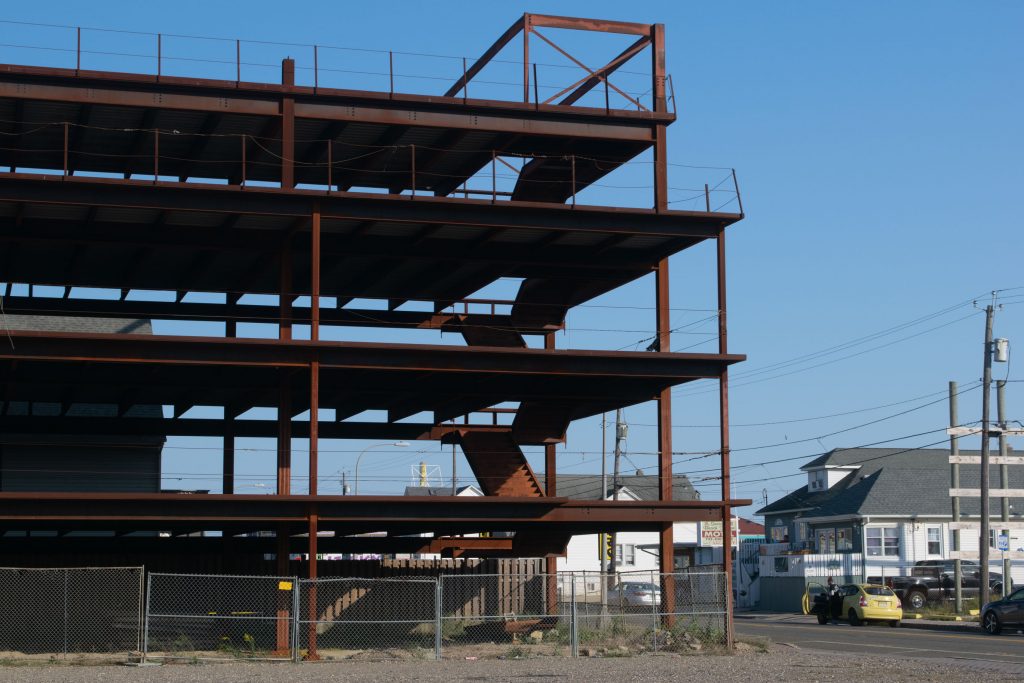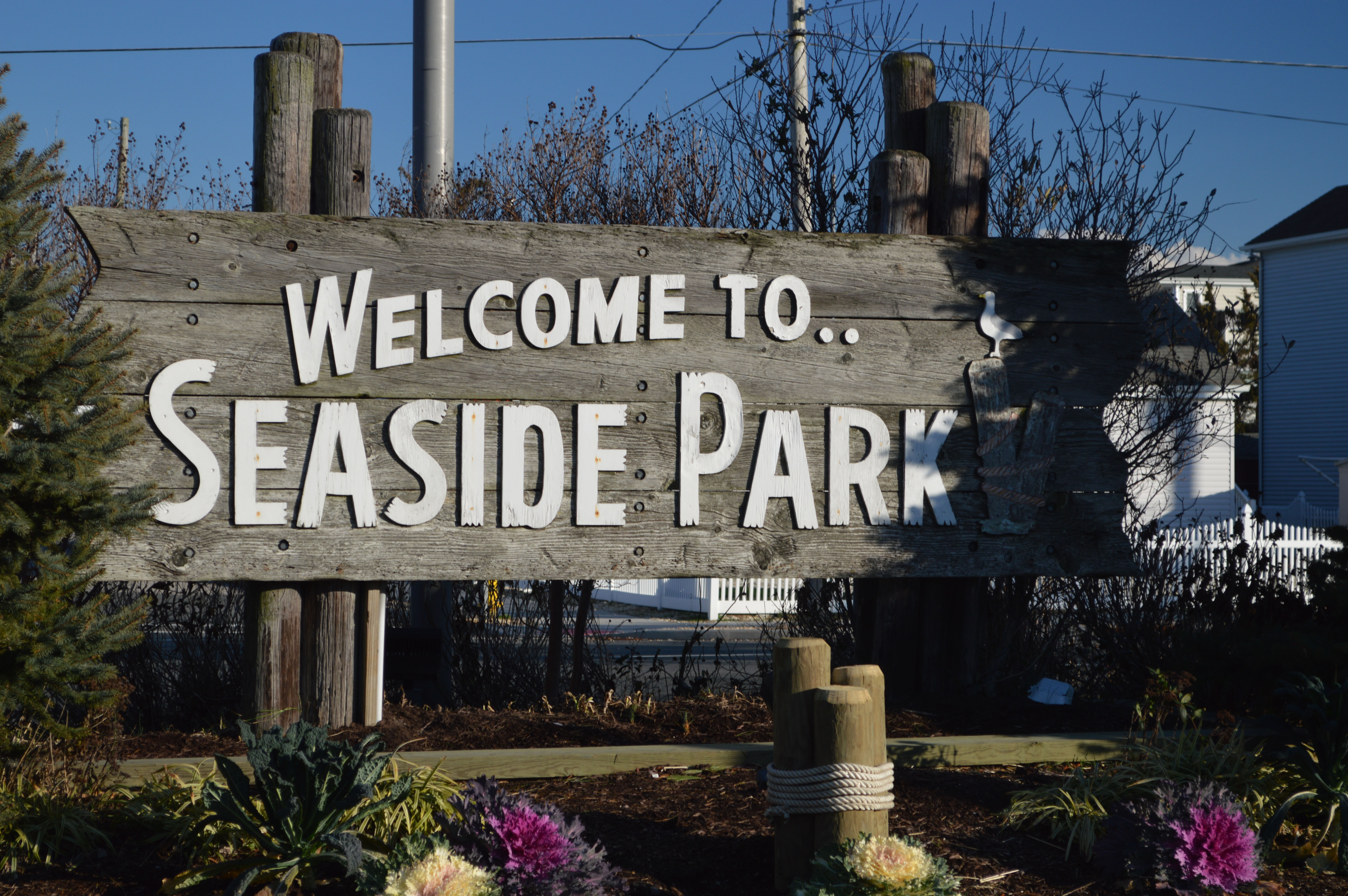The Seaside Heights borough council this week voted 6-0, with one abstention, to formally condemn the multi-story steel structure that has plagued the Boulevard for a decade, and will now enter into legal proceedings with its owner.
The council voted to condemn three lots that make up the area between Webster and Hamilton avenues owned by Vincent Craparotta, who had long held that he planned to build a nightclub and entertainment complex at the site. Later, he proposed a mixed-use retail and residential complex, but financing never materialized and Craparotta was found not to have participated in a borough-ordered redevelopment plan for the parcel. Much of the towering, rusting steel of the building’s superstructure remains intact and is frequently cited as a blight on the town’s business district by officials, residents and fellow business owners at council meetings.

The steel structure at the Boulevard and Hamilton Avenue in Seaside Heights, June 5, 2019. (Photo: Daniel Nee)
“The lawyers now have it – his lawyers, our lawyers,” said Mayor Anthony Vaz. “We have an appraisal and I imagine he has an appraisal.”
It is likely that a judge will ultimately decide the compensation the borough must provide to Craparotta. The borough, in turn, will recoup the acquisition costs by selling the property to a developer who follows the redevelopment plan ordered for the site and can prove financing is in place. New development must be approved by the planning board and the council.
That leaves the question that has been on the minds of residents and visitors for years: when will the steel finally be removed?
“We may take down the steel itself and make it a lot until it’s sold, or a developer may come in with a price we like, and they’ll take it down,” said Vaz. “My understanding is that [the process] moves rather quickly now.”
Craparotta, who also owns Hemingway’s Cafe on the Boulevard, dreamed of opening an entertainment megacomplex at the site that would have consisted of nightclubs, pools, bars and restaurants. The 2008 financial crisis and legal wranglings with a one-time business partner took the wind out of the sails of the plan after the superstructure of the complex had been constructed. But legislation signed in the wake of the financial crisis kept permits alive that would otherwise have expired and allowed the borough to take action. Additional legislation kept permits active in the wake of Superstorm Sandy, leaving the town with no recourse as the site deteriorated. Once the legislation expired, the borough council declared the area in need of redevelopment and attempted to negotiate with its owner, but no deal was ever reached, leaving an eminent domain taking as the last option for officials.

A proposed mixed-use property to replace the ‘steel structure’ in Seaside Heights. (Photo: Daniel Nee)
“The public, the business owners, people who want to develop the town all want this to come down,” said Vaz.
At previous meetings where the property was discussed, Craparotta, sometimes accompanied by an attorney, attended. This week, there was no one in attendance representing the property owner. The council voted 6-0 in favor of the taking, with Councilman Michael Carbone abstaining because he holds a liquor license in town and is legally precluded from voting.
“Until 2018 we couldn’t do anything legally except ask him to clean it up,” Vaz said. “We had to do what we had to do.”

Advertisement

Police, Fire & Courts
‘High Visibility’ Traffic Enforcement Detail Planned for Routes 70, 35 on Thursday

Seaside Heights & Seaside Park
PBS ‘Shore Week’ Series to Chronicle Seaside Heights Broadway Performances

Police, Fire & Courts
Cops: Juvenile Arrested After 118mph Joy Ride in Seaside Heights, Toms River Kills 2

Seaside Heights & Seaside Park
Seaside Heights Mourns Passing of Boardwalk Legend, Still Working Into His 90s










